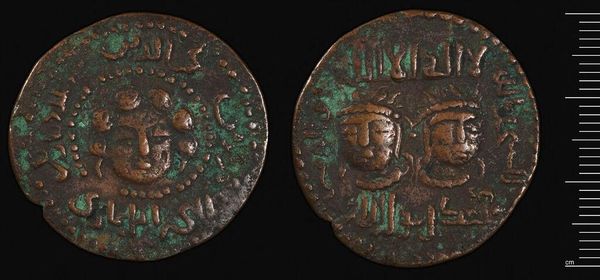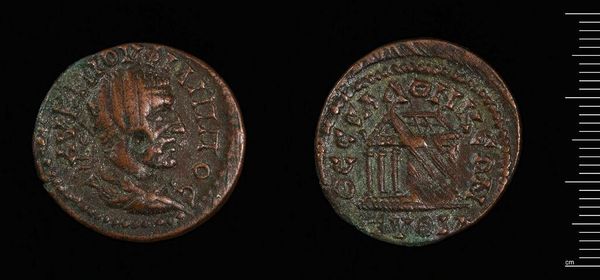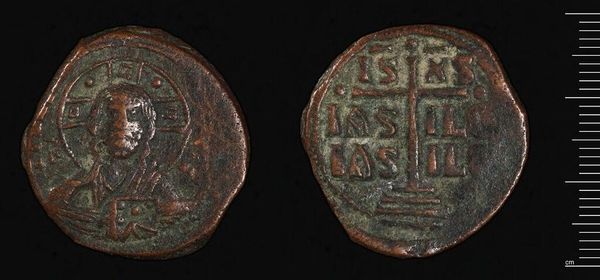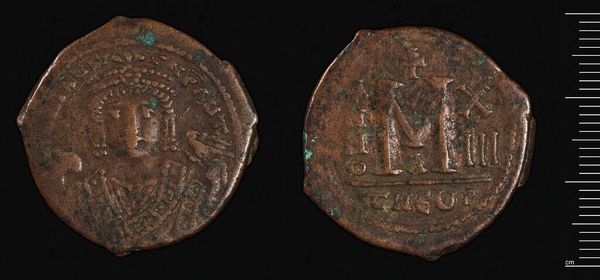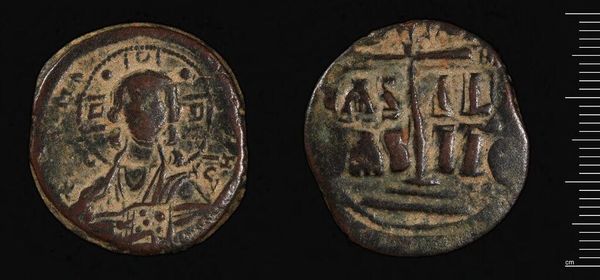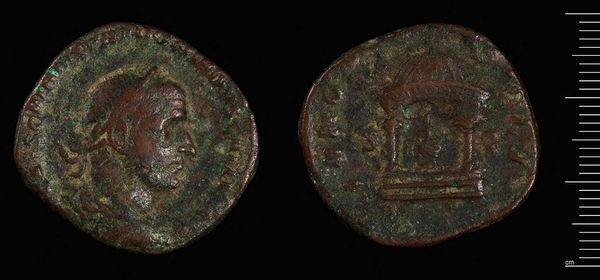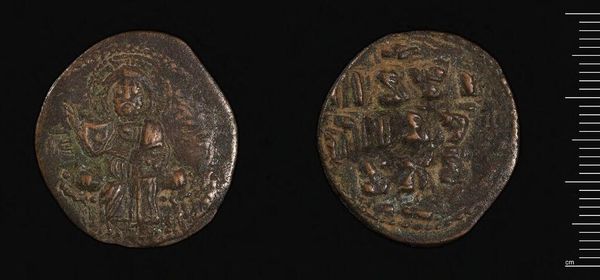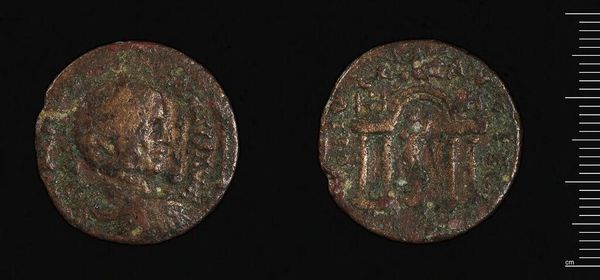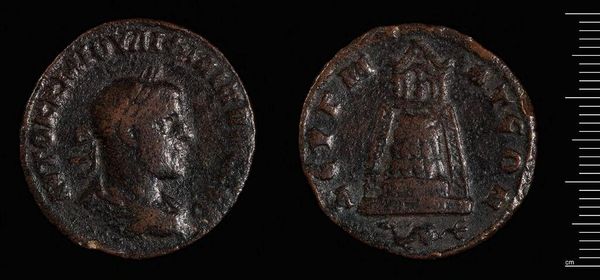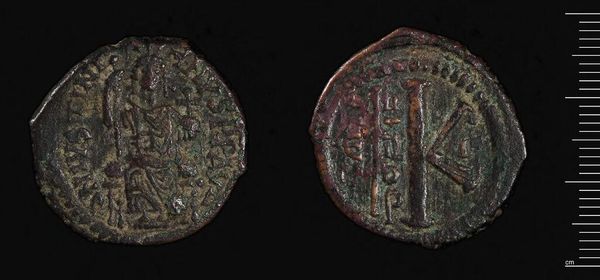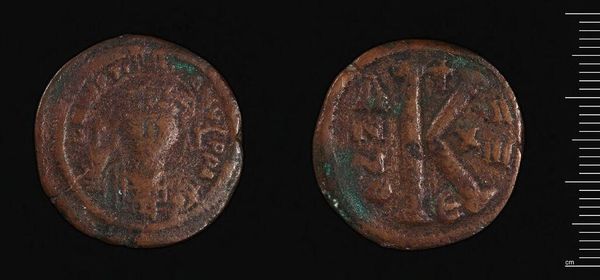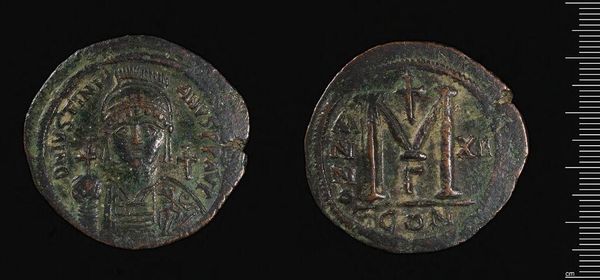
Dimensions: 17.88 g
Copyright: CC0 1.0
Curator: Here we have a coin commissioned during the reign of the Roman Emperor Elagabalus, a tiny window into a tumultuous era. Editor: Well, immediately, I'm struck by how worn it is. It whispers stories of countless hands, transactions, and journeys. I wonder about the metal's origin, the labor involved in its mining and minting. Curator: Its very existence points to Elagabalus' efforts to legitimize his reign through iconography. The chariot, likely carrying the sacred black stone of Emesa, signals his religious priorities. Talk about material culture and a PR spin! Editor: Precisely. The weight of 17.88 grams also implies the standardization of currency at the time, and how this coinage would impact Sidon's economy and trade routes. Small object, huge implications. Curator: Indeed. Even now, I can feel the past in this tiny piece, a tangible connection to the religious fervor of the emperor. There's a strange kind of poetry in that. Editor: Agreed. It’s a testament to how a single object can embody so much about process, power, and the everyday lives of people long gone.
Comments
No comments
Be the first to comment and join the conversation on the ultimate creative platform.
